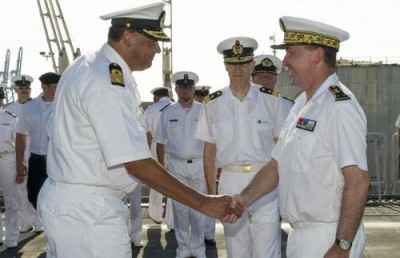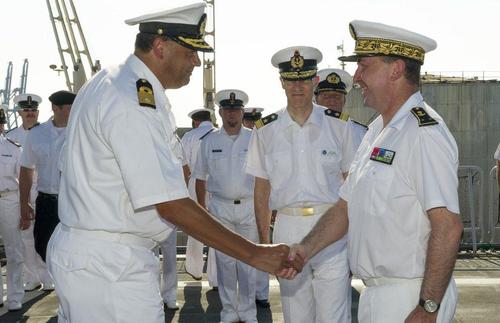Change of command made in Atalanta

(BRUSSELS2) As we had already announced (read: The former Pasha of Joan of Arc at the head of EUNavfor), France took command of the European Maritime Anti-Piracy Force (EUNAVFOR), also known as task force 465, this Friday (December 6).
The change of command took place in Djibouti, with Rear Admiral Hervé Bléjean succeeding Dutch Commodore Peter Lenselink. He will command the force from the landing craft transport ship (TCD) Sirocco, for a period of 4 months.
The dry period
The beginning of the French command coincides with a so-called dry monsoon period, which is characterized by an improvement in climatic conditions, a context that can favor piracy actions » we notice at the General Staff of the armies. This calls for the greatest caution.
4 ships available
The European force is made up, depending on the moment, of 3 to 4 ships and 3 to 5 maritime surveillance and patrol aircraft. Today, we have 4 ships available:
- the barge and landing ship TCD Siroco (L-9012) flagship),
- the german frigate FGS Hessen (F-221), which has just taken over from Niedersachsen. Read : Latest Piracy News (17 Nov)
- the italian frigate ITS Libeccio (F-572)
- the spanish ocean patrol vessel ESPS Tornado (P-44) who took over the ocean ship Meteor.
- and soon the Ukrainian frigate hetman Sahaydachnyi (U130). Read : Ukraine joins the European Union. ласкаво просимо.
To these must be added:
- the Serbian soldiers forming the embarked protection detachment (VPD). Read : Serbian VPDs on watch on WFP boats)
- patrol aircraft: the German P3 Orion and the Spanish Casa CN-235, based in Dibouti, as well as the Luxembourg Merlin SW3, based in the Seychelles.

